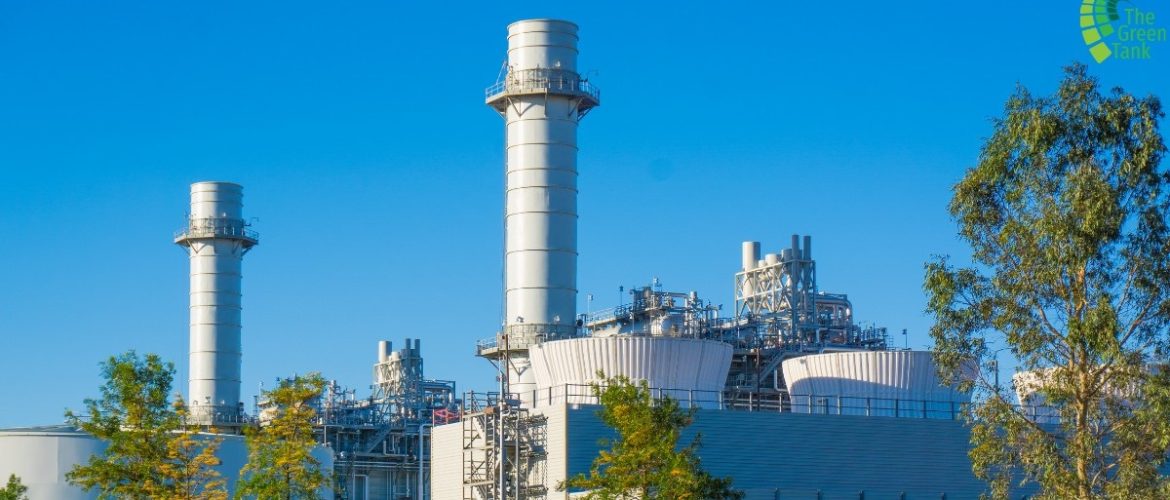PRESS RELEASE
A new report by The Green Tank finds that over the past 1.5 year, meeting domestic demand has never required more thermal power plant capacity than that currently available by gas plants (6 GW). The maximum gas plant capacity of 7.885 GW planned for 2030, according to the NECP, needs to be reviewed.
The need for full decarbonization of electricity production is already reflected in the National Energy and Climate Plans (NECPs) of several EU Member States that aim to achieve a zero carbon footprint of their electricity sector by 2030 or 2035. Similarly, the Greek NECP – which is under review – sets ambitious targets for the acceleration of renewables, as well as for new electricity storage infrastructure. This means that the role of gas-fired plants in electricity production will steadily shrink, following the downward trajectory of lignite.
However, in contrast to this trend, the revised NECP provides for the addition of two new gas-fired plants to the existing fleet without any retirements, bringing the total installed capacity from 6,037 GW (currently) to 7,885 GW. This raises questions about the economic viability of gas plants that are likely to depend on subsidies, such as capacity adequacy mechanisms, raising costs for consumers.
In the absence of an updated national Resource Adequacy Assessment, The Green Tank, in its analysis entitled “How much gas capacity does Greece need?”, used hourly entso-e data and calculated the total thermal capacity from gas and lignite plants that was needed to meet domestic electricity needs from 2019 until the first half of 2024. The aim of the analysis was to investigate whether this total capacity is the minimum necessary for the country’s energy adequacy or whether it would lead to unnecessary and costly subsidies for gas-fired plants.
The main conclusions are summarized as follows:
- Over the past 1.5 year, meeting domestic demand has never required more thermal power plant capacity than that currently available by gas plants (6 GW). In the past 3.5 years, domestic demand exceeded 6 GW for just 1 hour.
- The maximum thermal power plant capacity required to meet domestic demand has been steadily decreasing (-27.6% compared to 2019) and, in the first half of 2024, was reduced to 5.1 GW, nearly 2.8 GW below the gas plant capacity outlined for 2030 by the NECP.
- Between 2019 and the first half of 2024, thermal power plants produced 5.86 TWh at times when Greece was a net exporter of electricity; therefore, in theory, this quantity and its accompanying CO2 emissions -estimated at 3.56 Mt– could have been spared.
- Greece’s reliance on renewables is increasing at a steady rate. For 43, 105 and 119 hours in 2022, 2023 and the first half of 2024 respectively, net exports exceeded thermal power plant production; thus, during those hours, domestic needs could have been met almost entirely by renewables.
“Given the further development of renewables and new storage infrastructure, it is expected that the maximum required capacity of thermal plants to meet domestic needs will continue its downward trend. Therefore, it is necessary to review the total gas plant capacity of 7,885 GW reflected in the currently revised NECP for 2030, as well as the possible retirement of existing gas plants. The preparation of an updated national Resource Adequacy Assessment should be an urgent priority for policy decisions to be taken,” said Nikos Mantzaris, energy policy analyst and co-founder of Green Tank.
Notes to editors:
- Click here to read the full analysis titled “How much gas capacity does the country need?”
- Greece is among the nine European countries with the most gas plant capacity under threat of withdrawal due to deteriorating economic conditions, according to the latest entso-e pan-European Resource Adequacy Assessment.
- PPC plans to retire a total capacity of 1 GW of gas plants by 2026, as reflected in its most recent three-year business plan for 2024-2026.
- In the analysis entitled “Gas in electricity production: Greece diverging from Europe”, The Green Tank draws on the latest electricity production data and highlights the correlation between high wholesale market prices and increased gas use in Greece, in contrast to the gas and price decline trends seen in other European countries.



